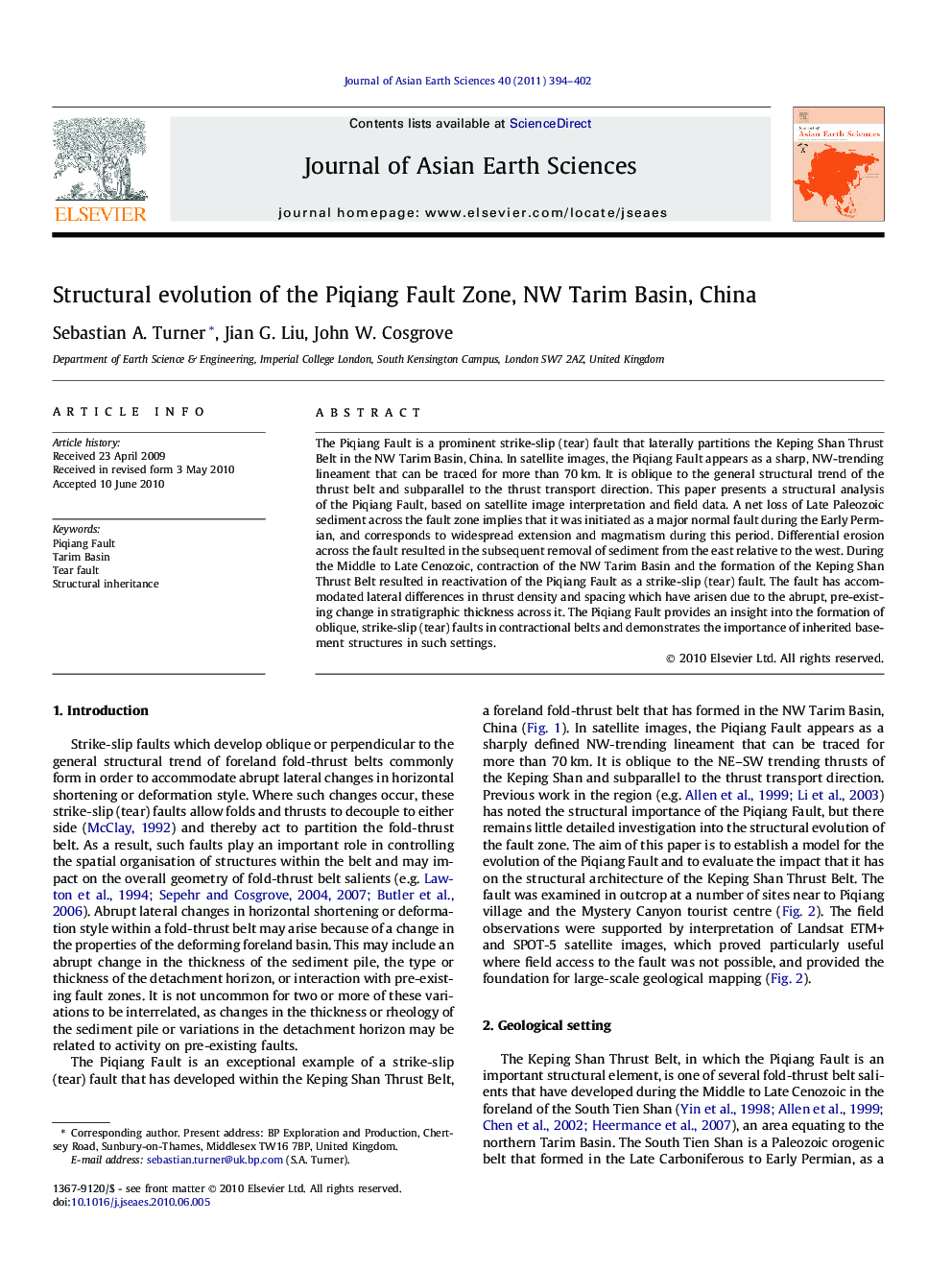| Article ID | Journal | Published Year | Pages | File Type |
|---|---|---|---|---|
| 4731807 | Journal of Asian Earth Sciences | 2011 | 9 Pages |
The Piqiang Fault is a prominent strike-slip (tear) fault that laterally partitions the Keping Shan Thrust Belt in the NW Tarim Basin, China. In satellite images, the Piqiang Fault appears as a sharp, NW-trending lineament that can be traced for more than 70 km. It is oblique to the general structural trend of the thrust belt and subparallel to the thrust transport direction. This paper presents a structural analysis of the Piqiang Fault, based on satellite image interpretation and field data. A net loss of Late Paleozoic sediment across the fault zone implies that it was initiated as a major normal fault during the Early Permian, and corresponds to widespread extension and magmatism during this period. Differential erosion across the fault resulted in the subsequent removal of sediment from the east relative to the west. During the Middle to Late Cenozoic, contraction of the NW Tarim Basin and the formation of the Keping Shan Thrust Belt resulted in reactivation of the Piqiang Fault as a strike-slip (tear) fault. The fault has accommodated lateral differences in thrust density and spacing which have arisen due to the abrupt, pre-existing change in stratigraphic thickness across it. The Piqiang Fault provides an insight into the formation of oblique, strike-slip (tear) faults in contractional belts and demonstrates the importance of inherited basement structures in such settings.
